Eamon said this morning that "the E-P1's autofocus has taken a lot of flak," which is true. I distinctly get the sense, though, that "web wisdom" has exaggerated the E-P1's alleged slowness of focusing. It's not superfast, but once I tried it for myself I thought, "Oh, well, that's not so bad." I was pleasantly surprised because, after all the teeth-gnashing and hair-tearing and garment-rending over this issue, I had expected so much worse. I don't think I'd find it annoying in the long term. Maybe once in a while.
Since I have both cameras and both lenses (i.e., the 17mm and the 20mm) here at the moment, last night I ran a bunch of seat-of-the-pants trials with both lenses on both cameras. My sense is that the Panasonic 20mm might be just a little faster focusing on the E-P1 than the M.Zuiko is; it's tough to tell without the means to measure it. It's not a dramatic difference, though.
The difference is a little more pronounced with the two lenses on the GF1, where the 20mm focuses just barely noticeably faster than the 17mm. Both are still in the same ballpark on that camera, though.
The most distinct difference is between the two cameras themselves. While the focus on the Olympus just plain isn't as bad as it's painted to be out on the pixel-peeping web, the GF1 is unmistakably better. It's faster and locks focus more positively. (The E-P1 seems to have as a default a little in-and-out move that it goes through on every focusing attempt, with either lens. It does it briskly enough, but it uses up a little time that the GF1 doesn't seem to need.)
What really impresses me about the GF1, though—and might be getting overlooked in the general tendency to compare these two cameras to each other—is how remarkable the GF1 is at focusing a) in very low light and b) on featureless surfaces. With the AF area on the smallest setting, the GF1 will lock focus immediately on a featureless white wall:
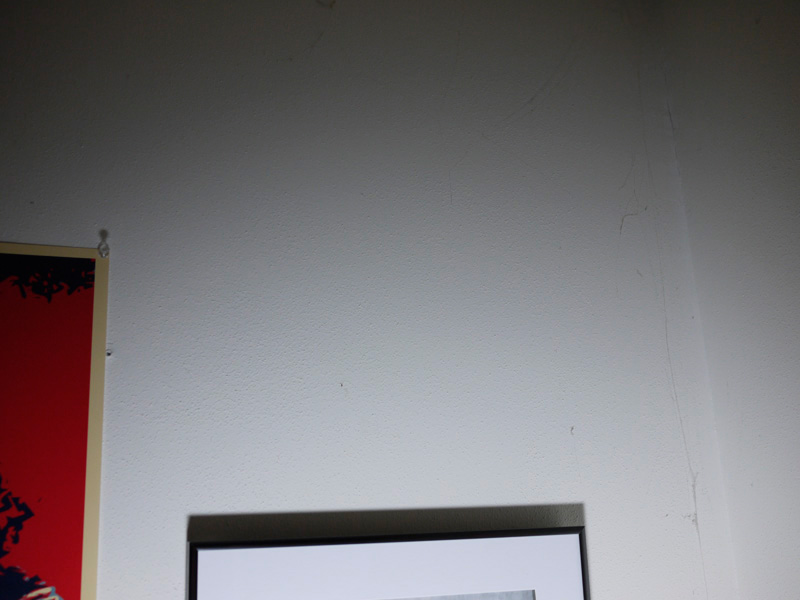
This is the white wall immediately above my viewing board, at night, with the only light in the room being my 27-watt Verilux fluorescent, aimed at the corkboard below the framed picture seen at the bottom of this shot. With its AF area on the smallest setting, the GF1 repeatedly locks focus immediately on the plain white wall.
This is the texture of the drywall it's grabbing focus on. I can't make the E-P1 achieve focus at all in this situation.
With the same light as the only light in the mostly darkened room (I compared this JPEG with the actual scene to match its apparent brightness level, although bear in mind my night vision is not as good as a 20-year-old's), the GF1 repeatedly and immediately grabs focus on the darkened bookcase, just past the much brighter computer monitor—without using its focus-assist lamp (it pretty much has to be pitch dark before the AF-assist lamp will kick on). The E-P1 will focus here too, just not quite as quickly. (Metered exposure for the bookshelf area is 1 sec. @ ƒ/2, ISO 100.)
In fact I had a hard time finding situations in which the Sony A850 DSLR will focus where the GF1 won't. I did find a couple, but it wasn't easy.
The autofocusing ability of the GF1 is pretty remarkable, overall...compared to anything, not just compared to the E-P1.
Mike
P.S. You might be amused by the maxim I've had taped to my computer for the past couple of years...
ADDENDUM: With apologies for the slight off-kilterness of the setup (it's surprisingly difficult to get exactly square to a rectangular subject just by eye), here's a quick test of distortion correction with the two lenses, each of the top two shots using the E-P1:
As you can see, if the camera's JPEG engine is applying distortion correction to either of the lenses, it's applying it to both, although neither are quite perfect. The GF1, similarly, looks nearly the same with both lenses.
Best distortion correction of the four combinations, as far as I could see, is from the GF1 with the 20mm. —Although you'll note that I couldn't quite hold the camera steady in this shot! I don't know if you can see that in the small JPEG, but there's a little motion blur here. I could've tried again, but even though that has nothing to do with distortion, I figured it shows the main advantage of the E-P1 over the GF1 quite handily, so I should leave it alone.... —MJ
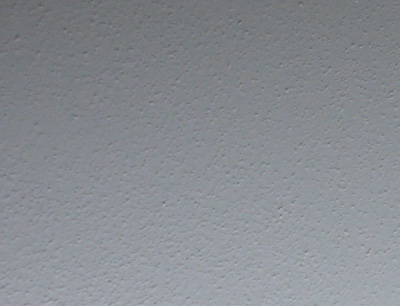
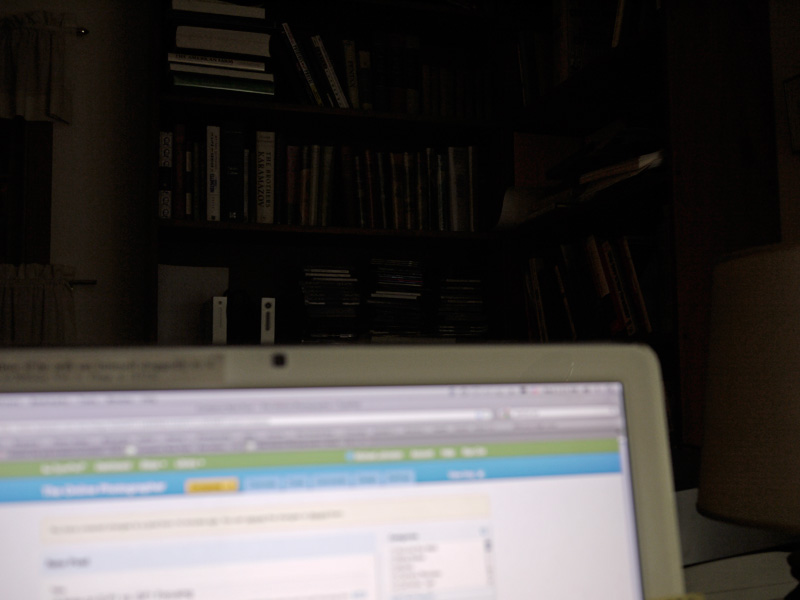
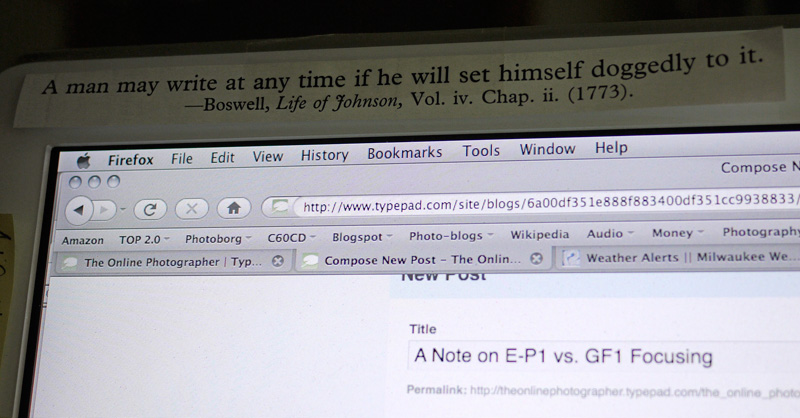
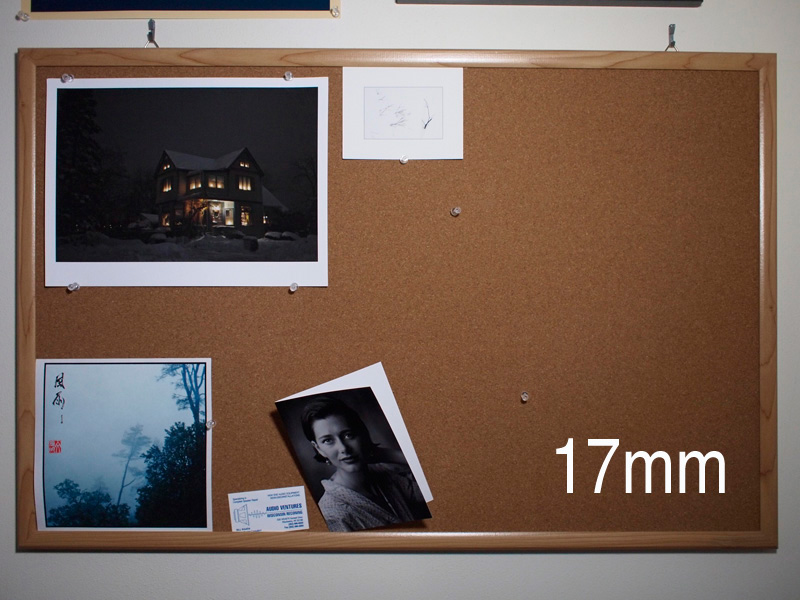
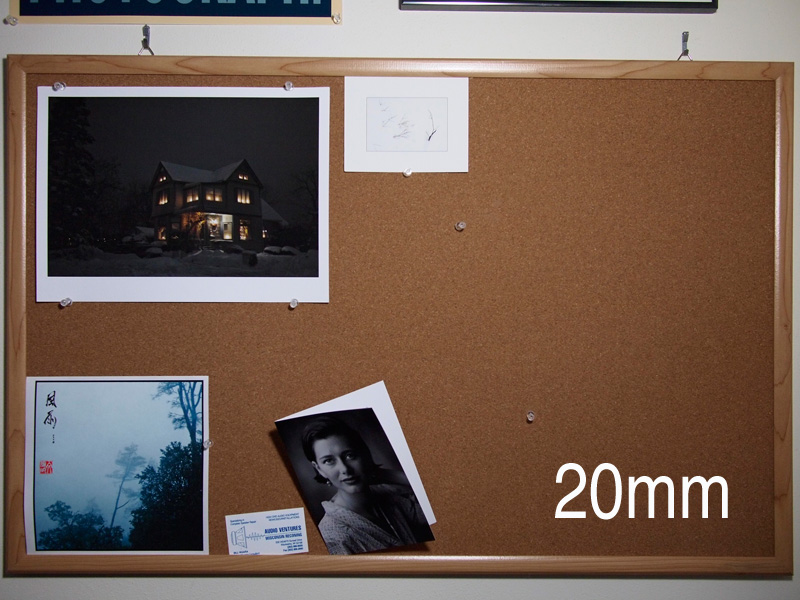
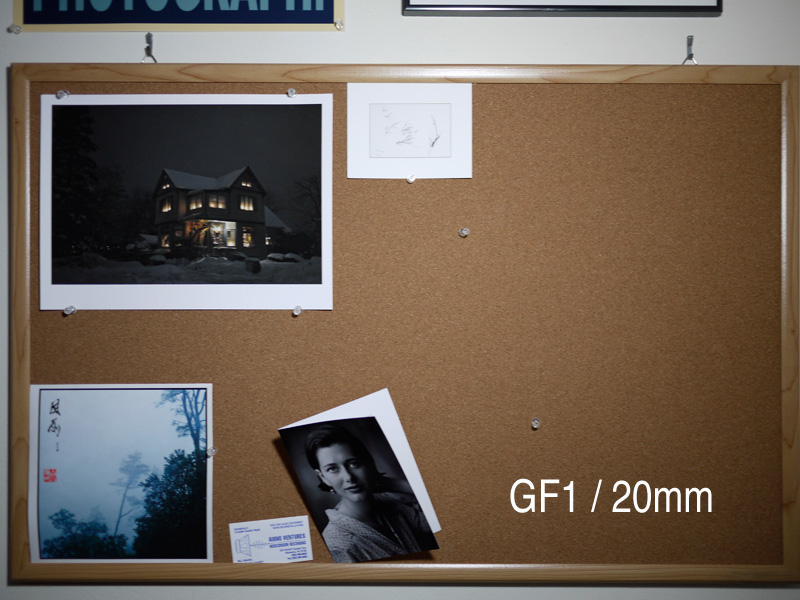



Great maxim, Mike: I would need to stick it on top of my iMac as well.
As for the remarks concerning the focusing abilities of the GF-1 and E-P1, yeah, I think measurebators are making possibly too much noise; as usual lately, we tend to waste time discussing endlessly about possible/hypothetical/theorical/realistic flaws in electronic devices, instead of using the same time to make some pictures (and realizing whether all those supposed flaws have any meaning), which might be much more interesting.
Posted by: Cateto/Jose | Wednesday, 09 December 2009 at 03:58 PM
Dear Mike,
I am confused. You say that the distortion correction is best with the GF1 and the 20. But at the end you say that this shows that the E-P1 handily beats the GF1. ?????
Jay
Posted by: Jay | Wednesday, 09 December 2009 at 04:57 PM
" I am confused. You say that the distortion correction is best with the GF1 and the 20. But at the end you say that this shows that the E-P1 handily beats the GF1. ?????"
Jay,
No, I mentioned at the end that I had a little trouble holding the camera steady, and THAT is what shows the advantage the E-P1 has over the GF1...because the E-P1 has body-integral IS and the GF1 doesn't.
Sorry, it was a different subject...I went rogue....
Mike
Posted by: Mike Johnston | Wednesday, 09 December 2009 at 05:49 PM
Dear Mike,
I just checked some RAW files done with the EP1 and the Panasonic 20mm lens. I'm seeing very low levels of distortion, period. Unless the camera's applying corrections even at the RAW level, I'm not sure what you'd be seeing that would lead you to think it's applying any distortion correction... or needs to.
pax / Ctein
Posted by: ctein | Wednesday, 09 December 2009 at 06:30 PM
I am honored to have my photo on your corkboard along with yours :-)
Posted by: Richard Man | Wednesday, 09 December 2009 at 06:45 PM
Does the GF-1 also have a facility to move autofocus off of the shutter button? I like to have this even if I don't use it as much as I think I do.
Posted by: psu | Wednesday, 09 December 2009 at 07:06 PM
"I just checked some RAW files done with the EP1 and the Panasonic 20mm lens. I'm seeing very low levels of distortion, period."
Ctein, which RAW developer are you using? Lightroom 2 will automatically apply correction, as will C1 and Silkypix. Several others, eg dcraw, Raw Developer, will not.
DPReview shows the uncorrected barrel distortion of the M Zuiko 17 here: http://www.dpreview.com/reviews/OlympusEP1/page22.asp and the Lumix 20 here: http://www.dpreview.com/lensreviews/panasonic_20_1p7_o20/page3.asp
I can confirm the DPReview findings based on my use of both lenses with Raw Developer as the converter. The Lumix 20 has slightly more distortion than is typical for 35-50mm primes, whereas the M Zuiko 17 has significantly more still.
Posted by: Amin | Wednesday, 09 December 2009 at 07:13 PM
"Shouldn't that be:
"A man CAN write at any time . . ."?
But who is going to argue with James Boswell?
Posted by: Bill Poole | Wednesday, 09 December 2009 at 07:52 PM
"Sorry, it was a different subject...I went rogue...."
We need the dear Governor to write an op-ed about the EP-1's focus speed. I believe that would be just about the only way we would get to the bottom of the AF controversy.
Posted by: sam | Wednesday, 09 December 2009 at 08:00 PM
Both the Panasonic and Olympus apply the distortion correction at the RAW level. Indeed, there are very few RAW converters that can process the image without the correction.
Posted by: sam | Wednesday, 09 December 2009 at 08:09 PM
Focusing has always been problematic...
Posted by: Marc Rochkind | Wednesday, 09 December 2009 at 09:01 PM
For those of us who have actually have shot thousands and thousands of images through the E-P1 there's absolutely no exaggeration how bad the focus is. Street shooters should just forget this one. Images may look good in bright light. But, the focus is one of many flaws.
Posted by: Bob R | Wednesday, 09 December 2009 at 10:20 PM
To Ctein: there are very few RAW converters (and none mainstream) that would *not* apply the distortion correction. But then again, couldn't care less; it's almost impossible for me to detect even the slightest hint of wrong effect from that (unsharpness from skewed pixels or anything else).
And one thing about E-P1 AF: if it's left on autoselection for the focusing spot (...zone) it tends to pick anything else but the actual subject... In an era of face-detection and all those engineering (and marketing) wizardry. Feels kinda wrong to return to my ancient reflex of using the central focus point as in Canon dSLRs, as opposite from the unbelievable AF in D300/D700 et all. And yes, returning to the matter at hand, GF1 feels like a Nikon AF; it simply works, selects what's needed and it does that speedy enough.
Posted by: Barbu | Wednesday, 09 December 2009 at 10:39 PM
I dunno, I think I'm in with the internet nabobs on this focusing thing. I just got my GF-1 w/20mm in the mail a few days ago (I think Amazon finally got a shipment in), and it focuses much slower than my Canon 30D with the 17-40 f/4L lens that I compared it with.
The 30D is basically instantaneous in most cases, and the GF1 takes a second or two, and makes a hideous buzzy racket while it does. It's still very usable, but it's definitely a noticeable step back from at least that SLR/lens combination.
Of course, it's also much smaller, which is the reason I wanted it, so we'll see how all that balances out over time.
Posted by: Mike Kozlowski | Wednesday, 09 December 2009 at 11:05 PM
Ok now that we have explored every facet of the EP1 and the GF1 can we PLEASE move on. Sorry I'm being a brat but I wonder just how many readers really care about these two cameras to the extent that they have been reviewed, re-reviewed, cross compared, interchanged etc etc.
Posted by: Eric Rose | Wednesday, 09 December 2009 at 11:23 PM
Great post, Mike. As for the maxim, mine has always been another of Johnson's - "No man but a blockhead ever wrote, except for money". One wonders what he would have made of blogging...
Posted by: Sean | Thursday, 10 December 2009 at 01:42 AM
I'm more interested in the accuracy than the speed of auto-focusing. Contrast (sharpness) detection systems should be much more reliably accurate that phase (range finders really) detection systems.
I'm really curious about the GF1 and how it can focus without seeming to overshoot. Most Contrast detection systems are closed loop where they keep racking the lens until the local contrast stops increasing and starts to decrease and then racks back. Does the GF1 have some sort of predictive auto-focus system where it can tell by the rate of change how much farther to rack the lens?
Posted by: hugh crawford | Thursday, 10 December 2009 at 02:16 AM
Eric's comment ought to be a Featured Comment!
Posted by: YS | Thursday, 10 December 2009 at 02:44 AM
There does seem to be quite a large number of people who do want to read about the m43 cameras, if Internet forums are anything to go by...
Also, given that Mike has just bought a gf1, I can't begrudge him his camera honeymoon period, comparisons, measurebating and blogging are all part of that.
And to the poster saying that the 20mm focusing noise is a hideous buzzy racket, it's not much louder than some usm style lenses, and a darn sight quieter than any screw driven af motor (older nikon, Sony, minolta, Pentax dales).
Posted by: Cliff Lee | Thursday, 10 December 2009 at 03:13 AM
Do not test a lens' distortion at close-up distance ... well, except when you're interested in the lens' distortion at close-up distance specifically.
Posted by: 01af | Thursday, 10 December 2009 at 03:29 AM
I'd also like to know if the GF-1 has a facility to move autofocus off of the shutter button.
Posted by: Poagao | Thursday, 10 December 2009 at 03:37 AM
Really interesting, I really love the new GF1
Posted by: Agenzia Fotografica | Thursday, 10 December 2009 at 03:53 AM
Like Barbu I find that if left to its own devices the E-P1 will focus on anything BUT what I'm taking a picture of, so I always use the central zone and reframe as necessary.
What we need is a touch-sensitive LCD, so we can point on the screen at what we want to be in focus, and the camera will do the rest.
Posted by: Antony Shepherd | Thursday, 10 December 2009 at 05:38 AM
The best way to use the E-P1 is to program one of the function buttons to focus. Pre-focus once and shoot many times. Makes the E-P1 faster than any camera where the AF works on each shot.
The in camera IS works great with any lens and is a distict advantage when you go with M mount primes.
Posted by: Andrew | Thursday, 10 December 2009 at 06:41 AM
I will never buy either an EP1 (or 2) or a GF1, but I am intensely interested in this discussion because it may tell me something important about the future of photography. While I mostly shoot with a 500m lens, on occasion I enjoy street photography and when I travel I get tired of caring my Nikon. So I'm interested. Brandon Scott
Posted by: Brandon Scott | Thursday, 10 December 2009 at 07:27 AM
"Eric's comment ought to be a Featured Comment!"
In honor of Eric, we are going to publish *nothing* but E-P1/GF1 posts for the rest of the month.
[g]
Mike
Posted by: Mike Johnston | Thursday, 10 December 2009 at 07:41 AM
I had the E-P1 for a month with the 17/2.8 lens. Later I also had the Panasonic 14-42mm lens. The 17/2.8 would go through a full "all the way out, then back in" thing every time, which never bothered me if I were shooting stationary objects. It was, however, considerably slower to grab focus than the 14-42mm Panasonic, which simply grabbed focus right away.
I did, however, love the automatic manual focus assist that zoomed way in as soon as you twist the lens.
Posted by: emptyspaces | Thursday, 10 December 2009 at 09:01 AM
Ctein, E-P1 doesn't apply distortion correction in RAW. When you open a photo in Studio, you have to tell it to correct the distortion. It will do it automatically (or you can do it manually) but tell it you must.
Posted by: erlik | Thursday, 10 December 2009 at 09:32 AM
I'd also like to know if the GF-1 has a facility to move autofocus off of the shutter button.
Yes - with options for AE/AF lock on button press.
Cheers,
Colin
Posted by: Colin Work | Thursday, 10 December 2009 at 12:49 PM
Dear Amin, sam, Barbu, and others,
Ooookayyyy... I think I'm about to learn something new (that makes it a good day in my book).
I looked at the dpreview page as you suggested, and I am not seeing aberration figures ANYTHING like that! Which leads me to conclude that Adobe Camera RAW in the latest version (whatever that is, 5.6?) does automatically apply lens corrections, both LAC and distortion. Either that or I have the magic lens that came with the Wonka golden ticket [g].
Pretty cool! I didn't know it did that. For the record, this is with the EP-1, and it was before I updated the camera firmware (it was at 1.0). So, unless I'm misunderstanding something here, mixing and matching lenses with the Panasonic lens with the Olympus camera doesn't prevent Adobe Camera RAW from applying automatic lens corrections.
All of which is news to me, and I'm glad to learn it.
I have to say, by the way, that ACR does a very good job with this; in my pixel peeping, I never noticed anything out of the ordinary in the appearance of my test images that would've caught my attention and said, "Hey, there's massaging going on here."
Can you or anyone else here recommend a free RAW converter that runs on the Mac that doesn't do automatic lens correction? It would be good for me to have one of those for testing purposes.
Barbu, I've noticed the same wandering focus problem. I was consistently getting what looked like "back focus" with the camera until I started to pay attention to what the autofocus region was doing, and it consistently picked areas slightly BEHIND the primary subject. It did this reliably enough that I think it's not a flaw in the camera but the way Olympus designed it, based on some idea of theirs about how the important areas of focus would be distributed. Problem is, it's not the way I work. Nor you.
Indeed, the solution for me was to turn off the multi-area and just go with the center focus region. Personally, I'm happier with that. It's what I'm used to in other cameras, and it makes the behavior of the camera more predictable for me. I am very used to the idea of swiftly locking focus and recomposing (years of using manual focus cameras), and it doesn't slow me down much. I know that will be a problem for other people, just mentioning that it works well for me. Mainly, I wanted to confirm that I'm seeing exactly the same behavior you're in the focusing behavior.
I think Andrew has the best solution, but I'm still trying to absorb the manual and figure out how to program the damn computer to do things the way I want.
~ pax \ Ctein
[ Please excuse any word-salad. MacSpeech in training! ]
======================================
-- Ctein's Online Gallery http://ctein.com
-- Digital Restorations http://photo-repair.com
=====================================
Posted by: ctein | Thursday, 10 December 2009 at 01:54 PM
Adobe Camera Raw 5.6 Beta---which is the latest version right now---does not apply any kind of lens aberration correction automatically ... neither did any earlier version.
Posted by: 01af | Friday, 11 December 2009 at 03:15 PM
Dear Olaf,
I double-checked this last night, with real photos. ACR's correcting for distortion and LCA in my Panasonic lens with the Olympus EP1 photos, and it's not anything I'm telling it to do.
Either that or I've got the magic rectilinear Panny 20mm with less than 1 pixel of LCA.
pax / Ctein
Posted by: ctein | Friday, 11 December 2009 at 06:40 PM
Ctein asked:
Can you or anyone else here recommend a free RAW converter that runs on the Mac that doesn't do automatic lens correction? It would be good for me to have one of those for testing purposes.
Give Raw Photo Processor a try. It has its own strengths— resolution, sharpness and micro-contrast among them—all geared very much toward print rather than on-screen prettiness. (There are even jagged lines on screen that don't appear on paper.) When I don't use it for final output, I still find it useful in creating signposts that tell me what my images are capable of delivering, since its default output is so different from that of Lightroom (ACR), though Lightroom 3 beta's much improved rendering engine is closer. The big question is whether you can put up with RPP's interface for long enough to discover its strengths; I think you might take to it but am always surprised by how difficult it is to predict who will love it and who will loathe it. Good luck! It would be interesting to read yr thoughts online somewhere, if they're printable. :-)
Posted by: Bahi | Sunday, 13 December 2009 at 09:48 AM
Mike- you should check the difference between Panasonic's Lumix 14-42 on both cameras. The pancake lens is known to not be as fast as this one and it shows where the bottleneck is.
That said, that issue wasn't a deal breaker for me when I had the Pen.
If you see the Pancake 17mm being "a little faster" on the GF1 over the Pen, that "little faster" grows wider in the 14-42, which is what the first numbers came about since that lens was out first.
Posted by: Ricardo | Sunday, 13 December 2009 at 02:53 PM
After days and day and days of trying to decide through torchorous cycles of comparing the EP1 and the GF1, this one article may have tipped the scales for me to purchase a GF1. Here's what I wrote in the micro four thirds forum at Dpreview.com:
Okay guys... here are specific things that are causing me to land in favor of the GF1:
Better image distortion correction in camera,
Auto-focus speed is not an issue but the GF1 seems to lock onto less contrasty areas than the EP-1 is able to. Focus accuracy is critical in image quality and it's sounds like the GF1 beats the Ep1 in this.
Slightly better Raw files have a slight edge over the Olympus.
In the end these three things gain favor with me over the Olympus EP1. I think i am finally inching closer to going for the GF1. Of course I will regret not having the EP1's Jpeg processing, but I much rather acheive the best raw image quality possible and I think this makes GF1 clearly a winner with the Panasonic 20mm lens for low light. I think I know what my heart is telling me... that if I have to be patient while working out a RAW work-flow, it is patience that makes photography rewarding for me and IQ matters more than anything...
Alas I can live with a cameras imperfections if the image quality that camera can produce is suburb. Alas, I own the Sigma DP2 and I am very happy with it. But in the micro four thirds category, I think the GF-1 is starting to speak more to my heart even if it was the EP1 at first. You can blame Kevin Spacey for that. emoticon - tongue
I will sleep on this, but I think the GF1 is going to win my heart. This is a last ditch attempt for EP1 owners to debate me on this. If I had the money, I would simply purchase both cameras.
-- Let me know if I am accurate in my observation of the the GF1! Thanks for the article here!
Posted by: Nathan Cowlishaw | Wednesday, 06 January 2010 at 12:45 AM